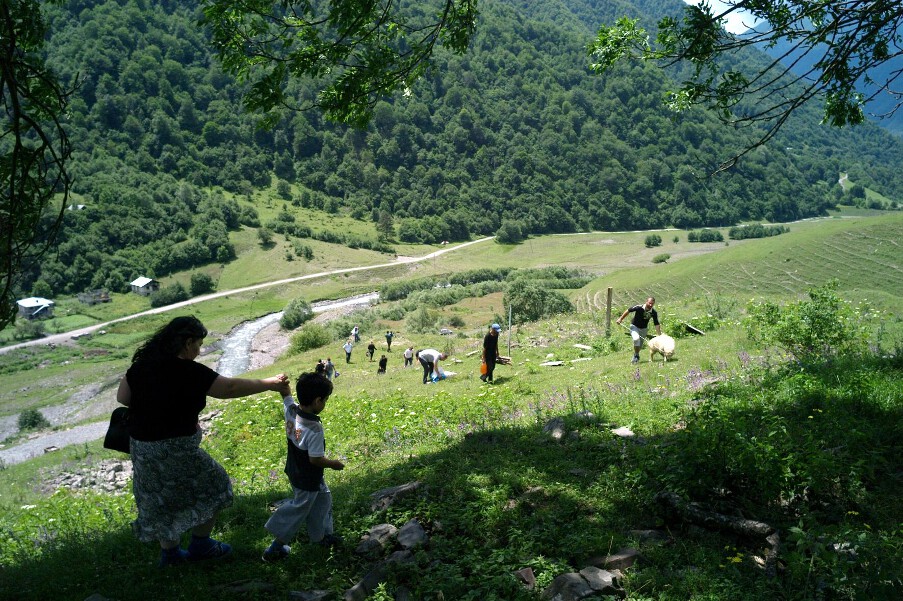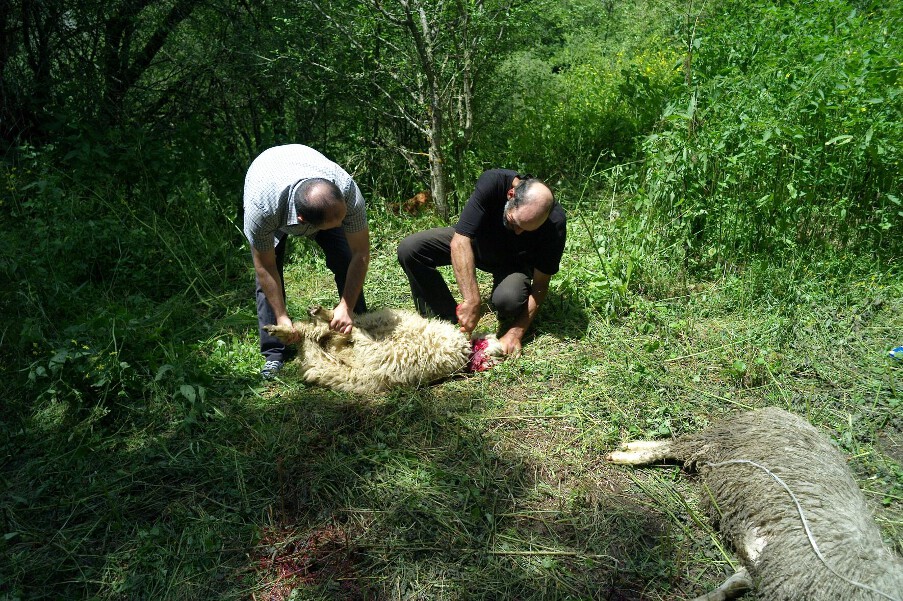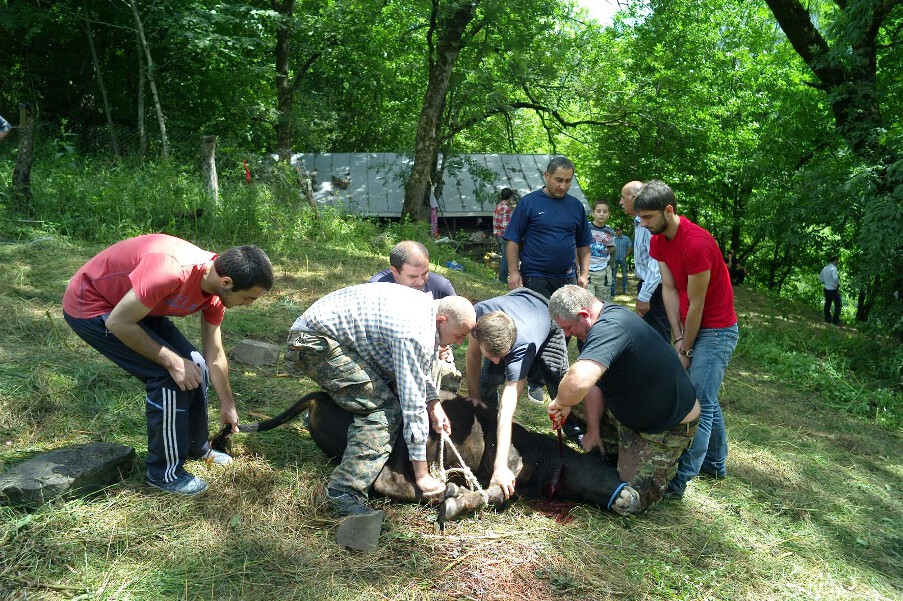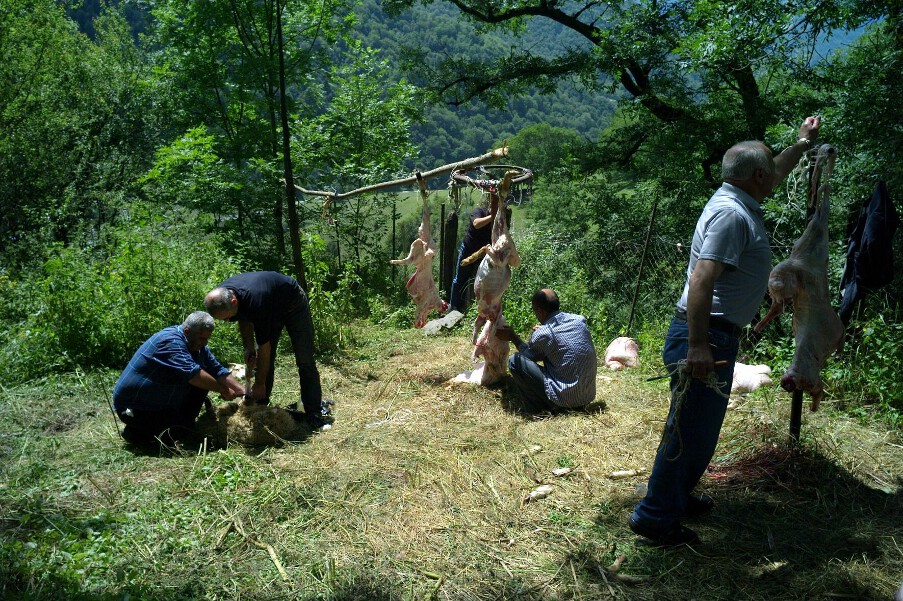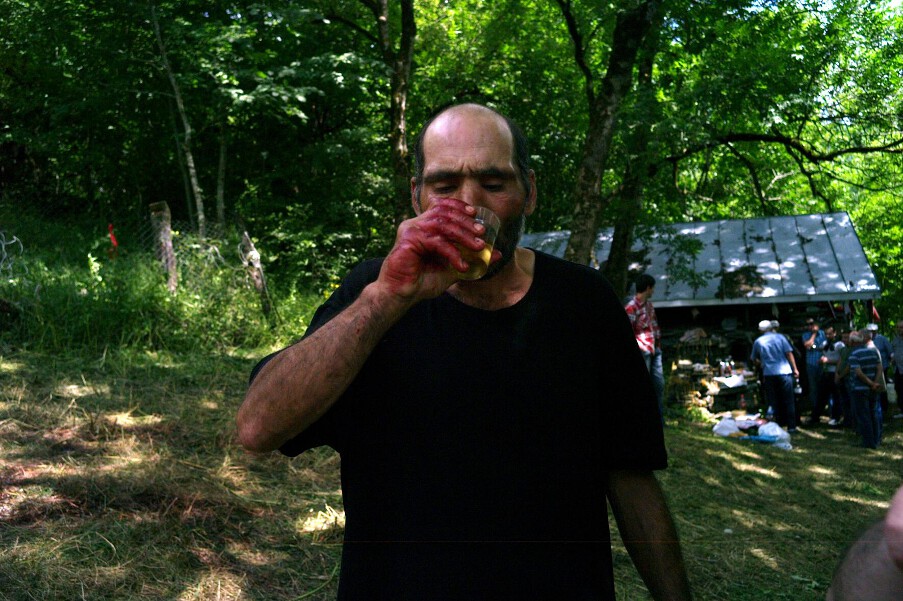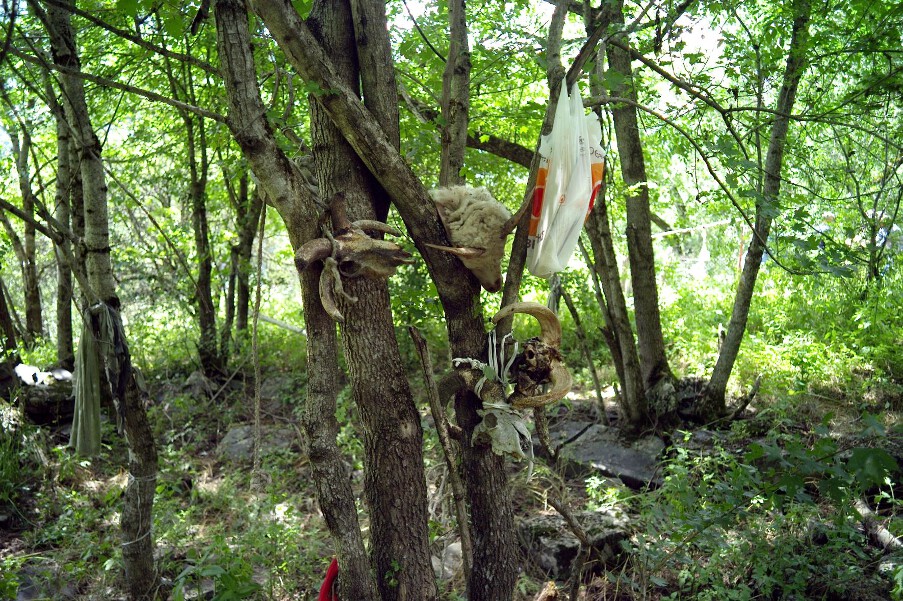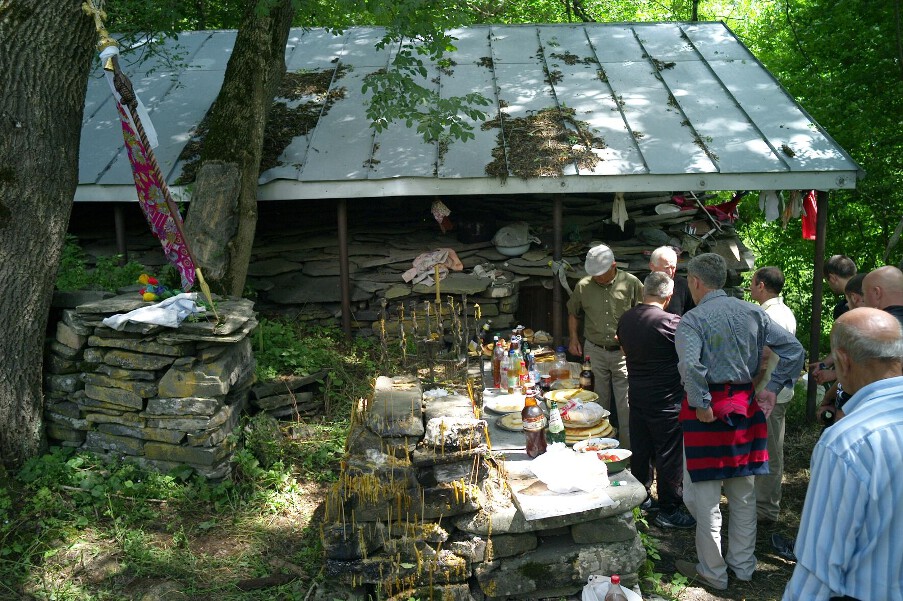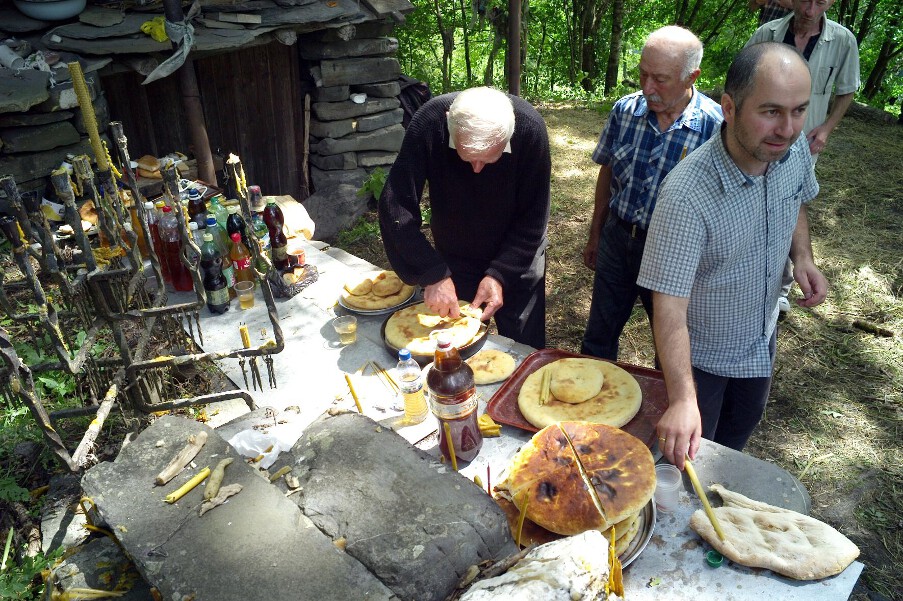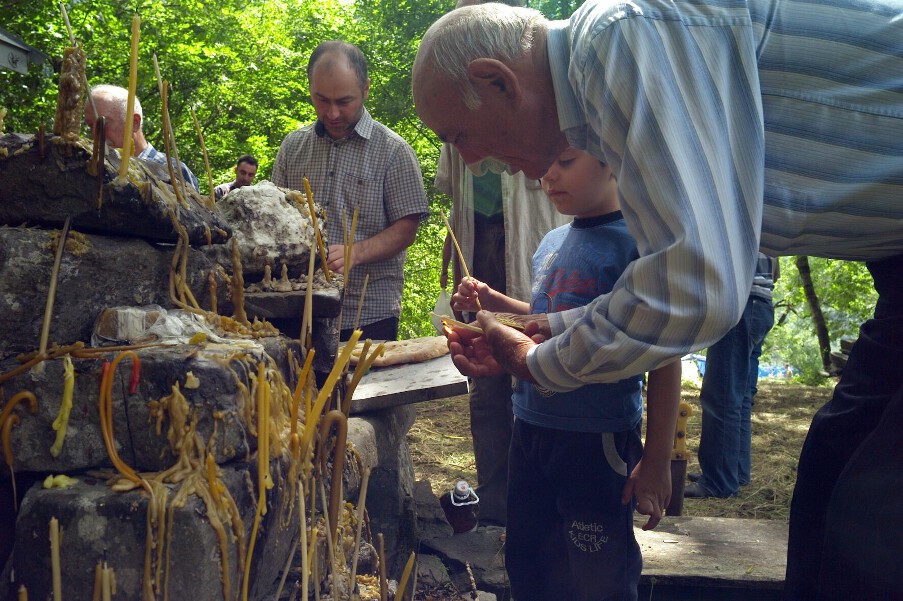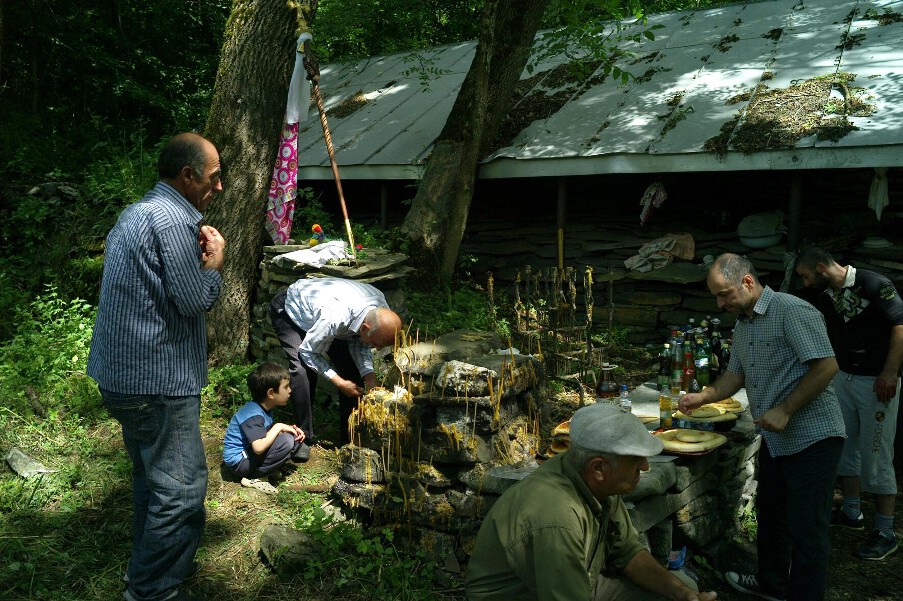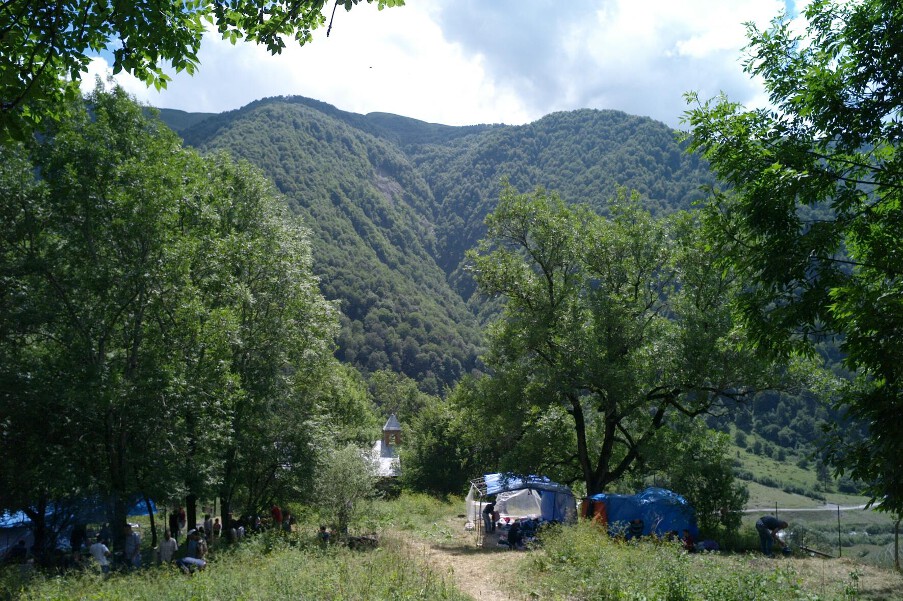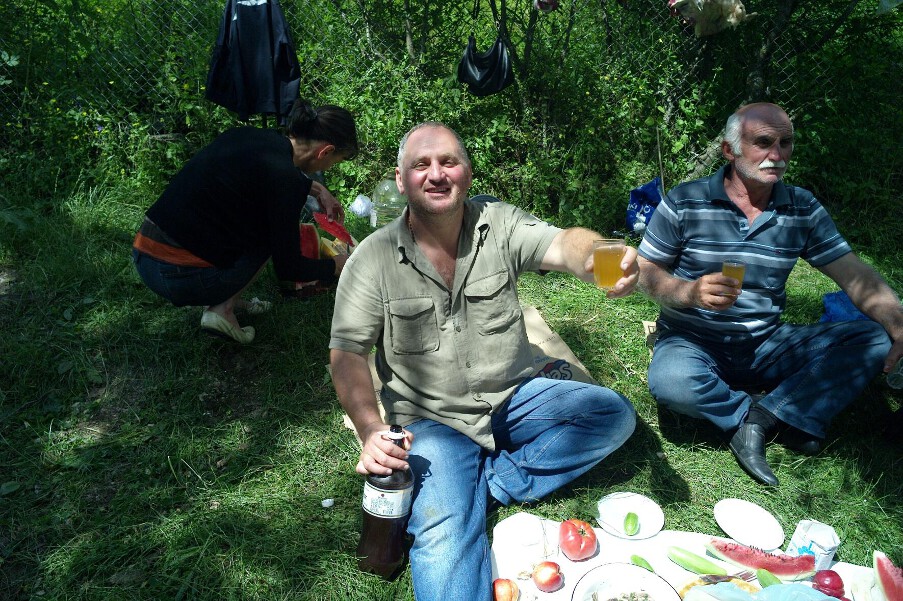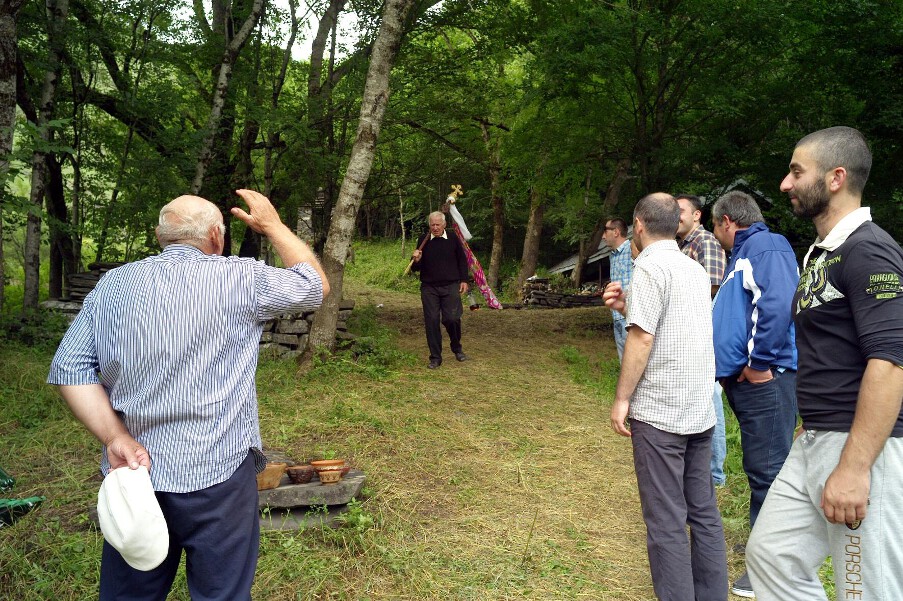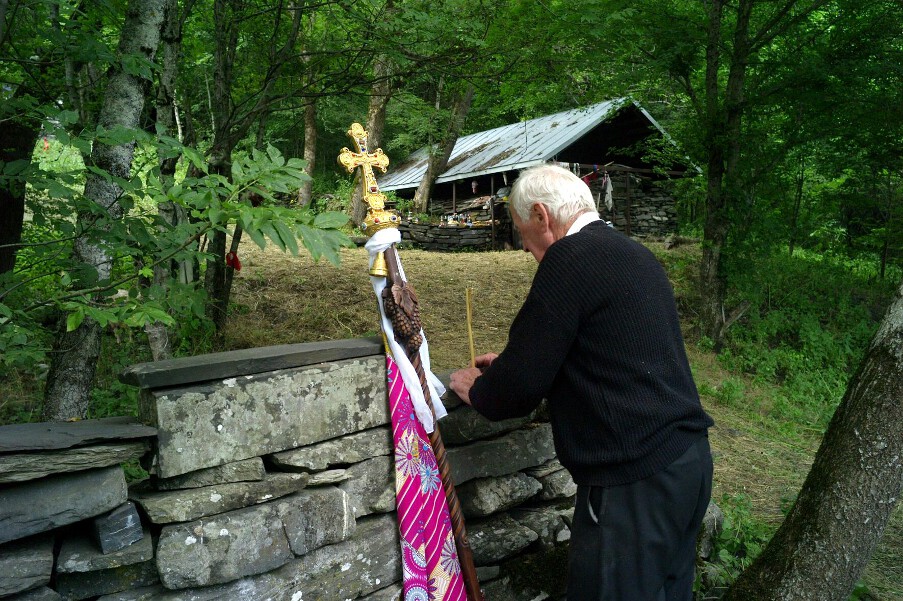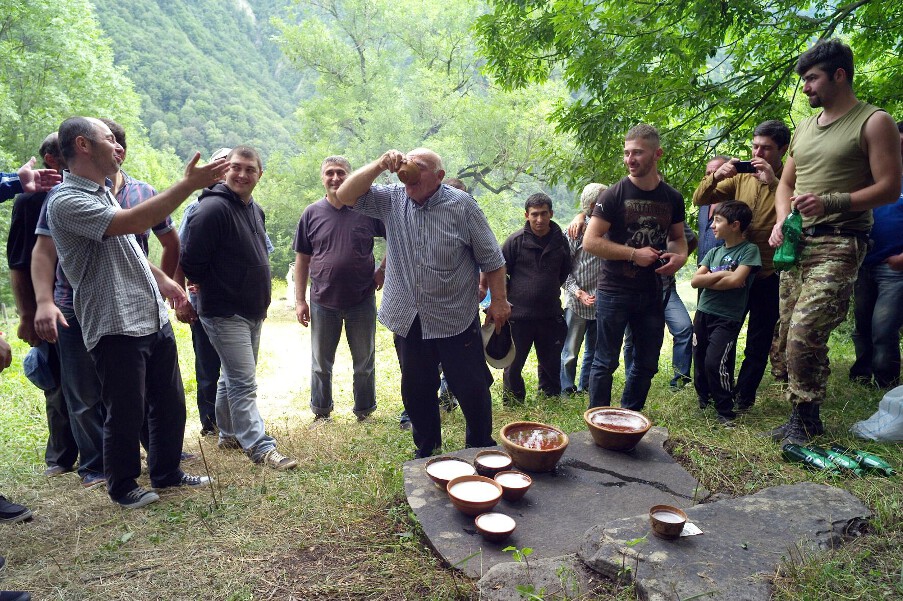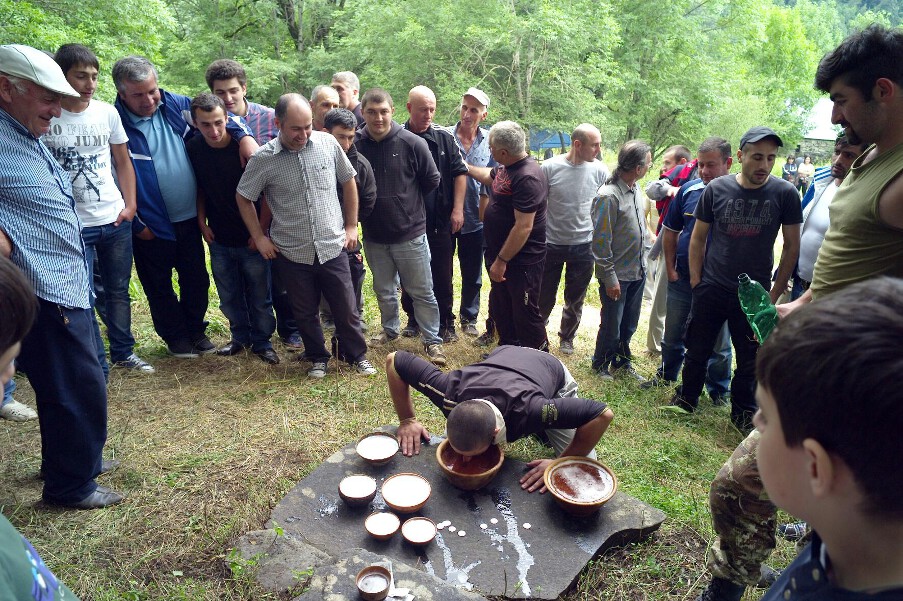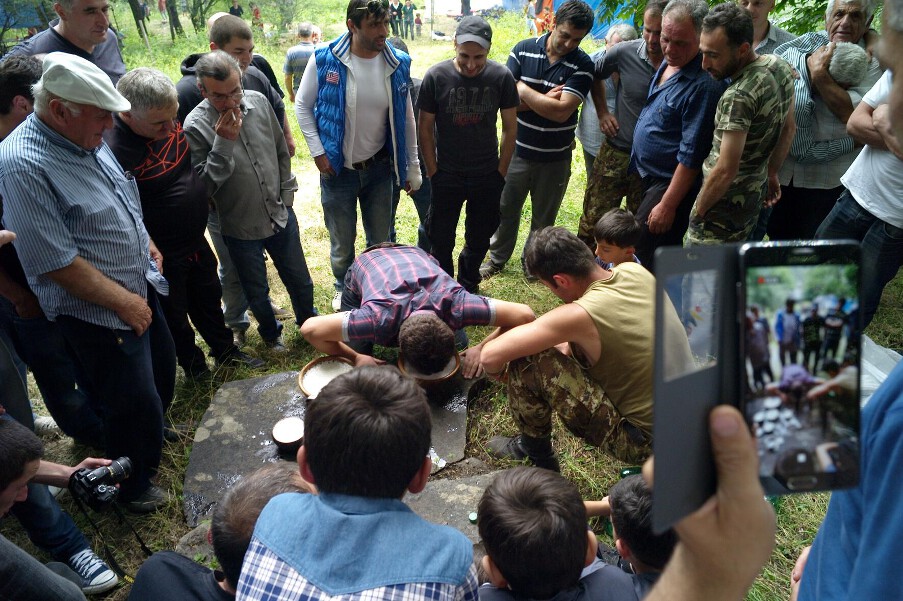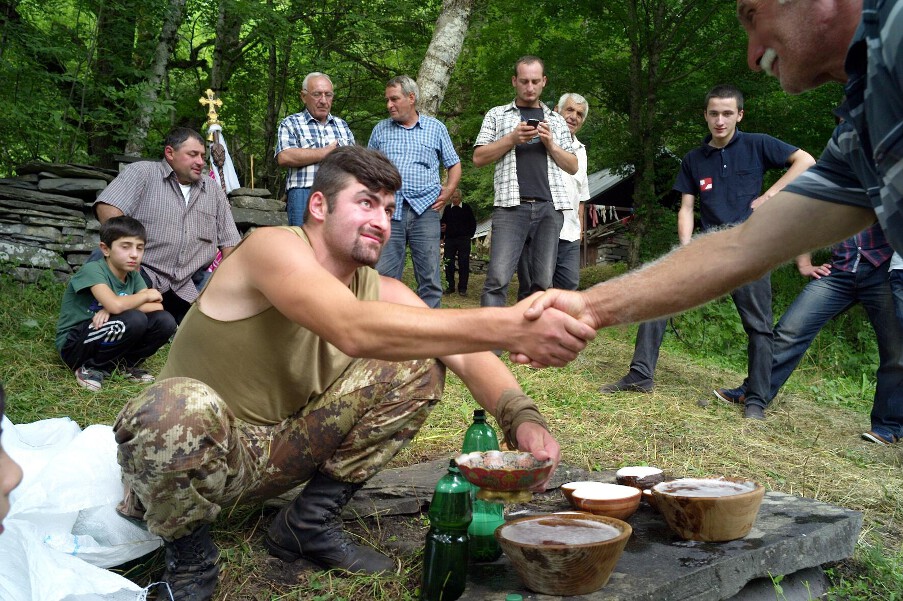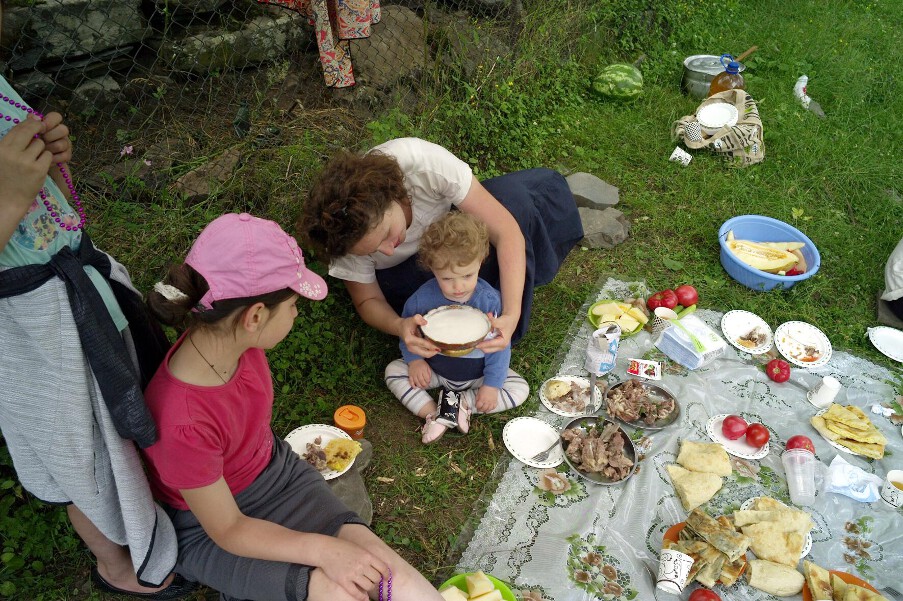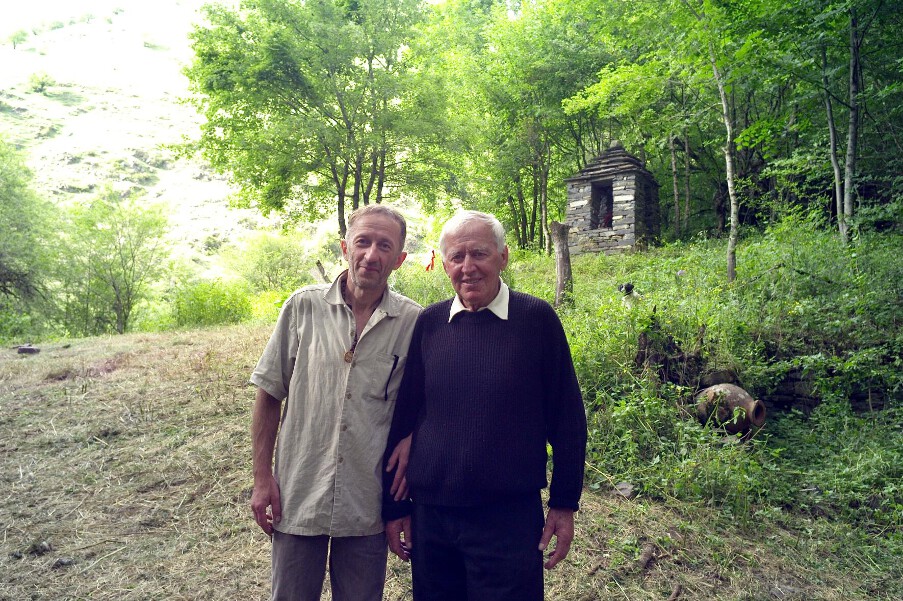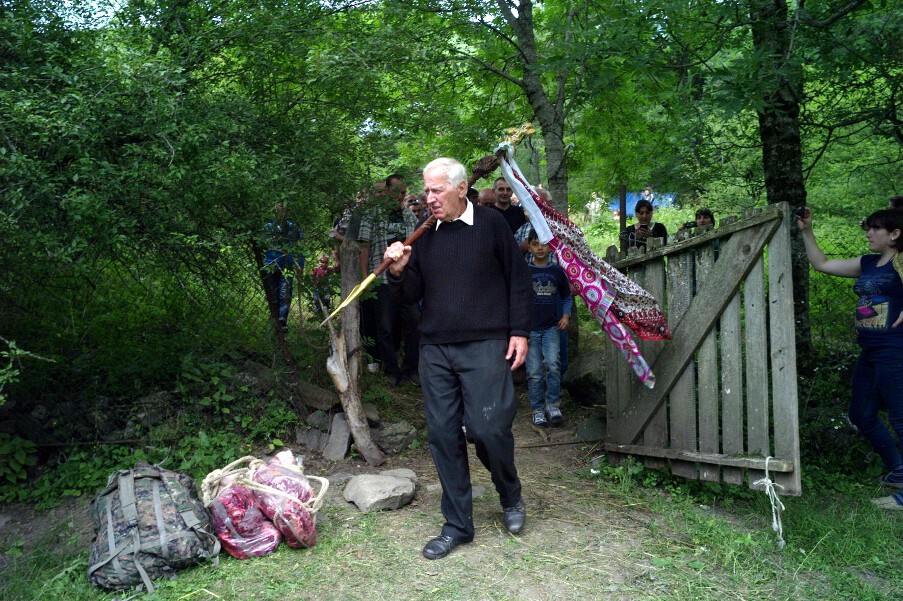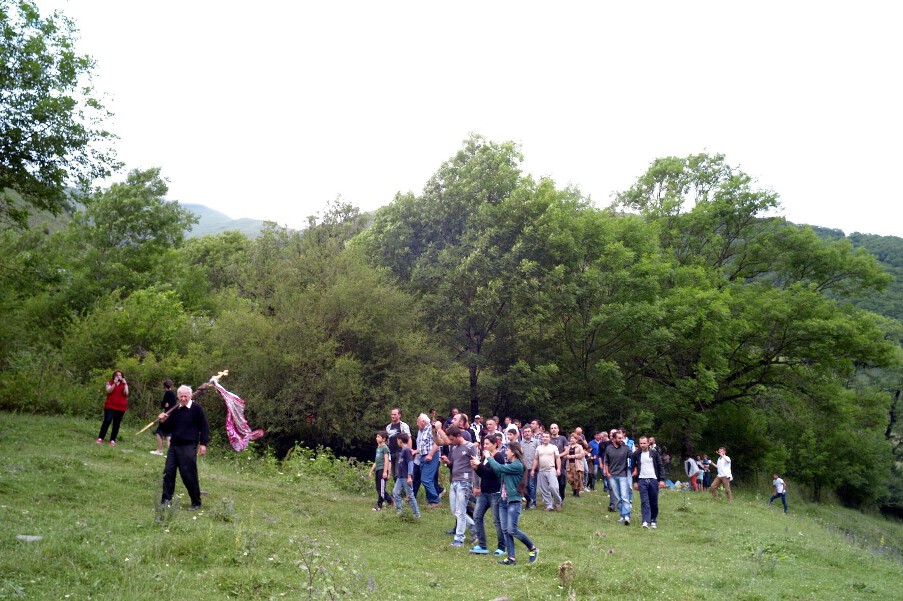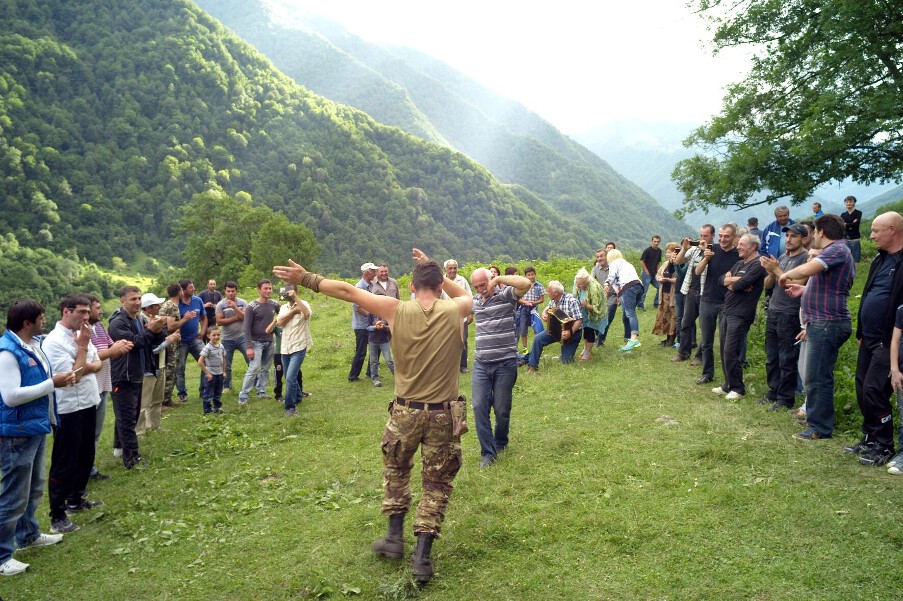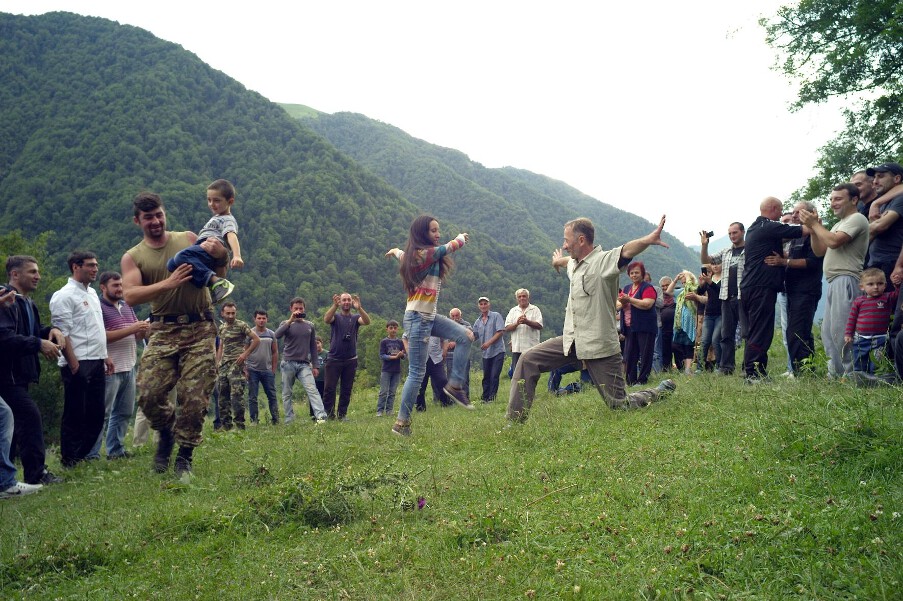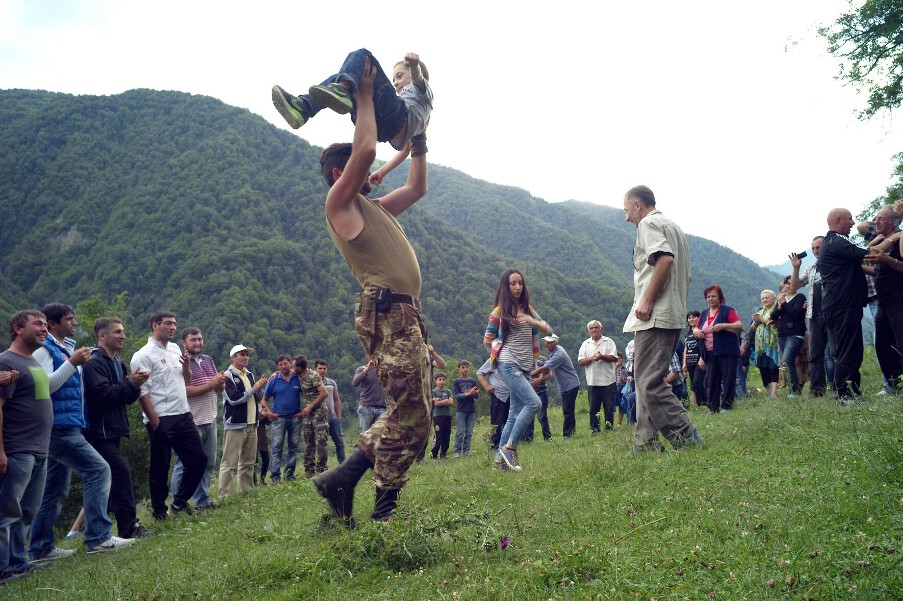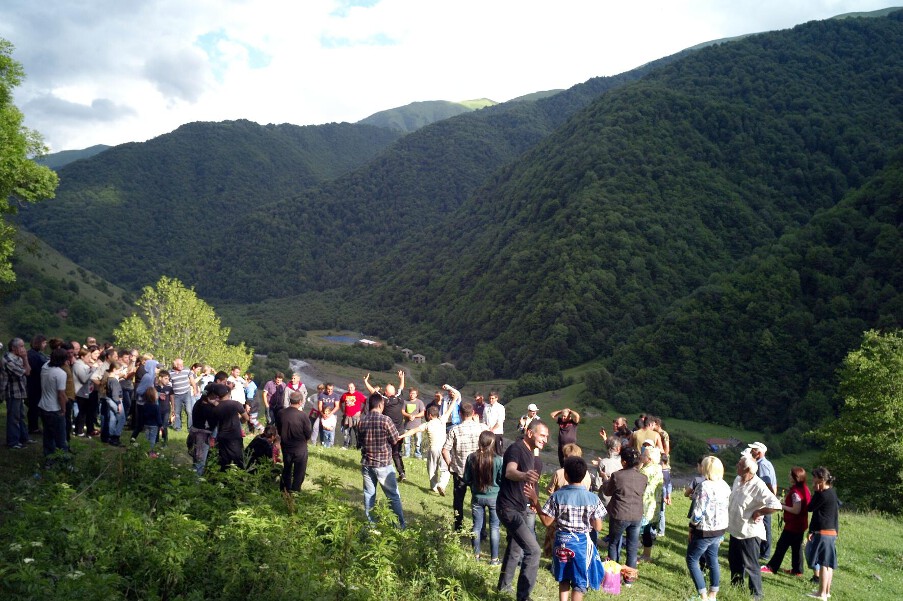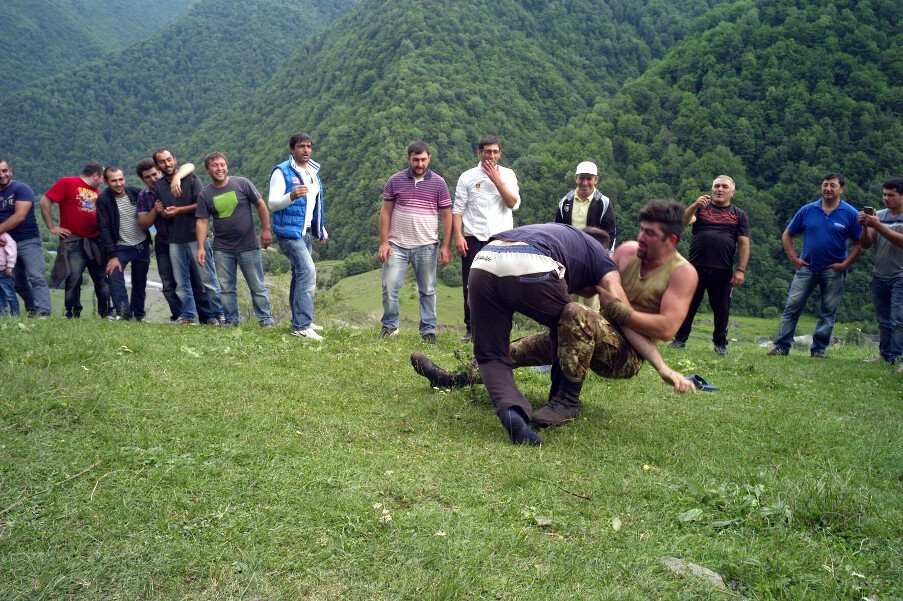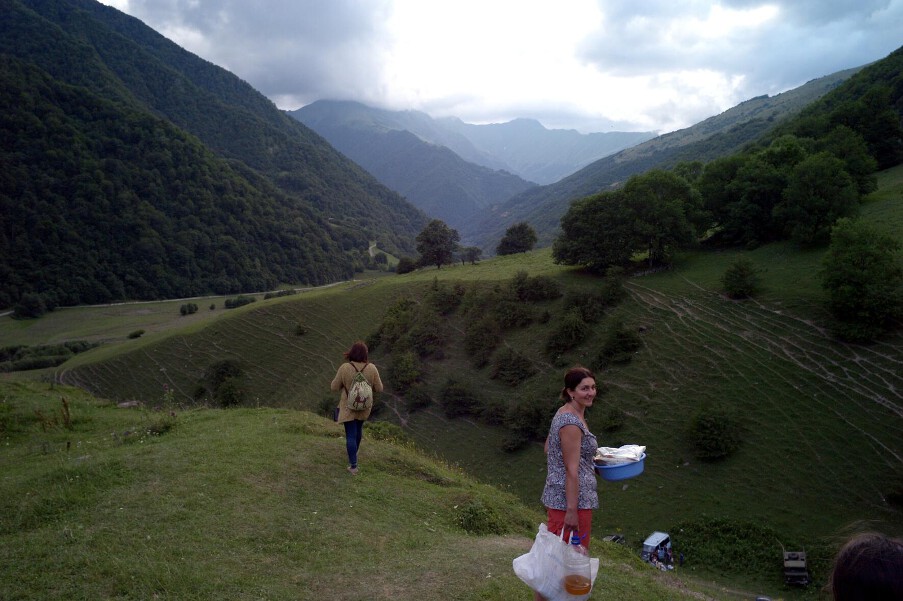THE 2015 EDITION OF
IAKHSROBA
A PAGAN FESTIVAL AT THE SHRINE OF IAKHSAR IN PSHAVI
The following photographs were taken during the 2015 edition of Iakhsroba, which was held on Saturday the 18th of July at the shrine of Iakhsar above the village of Shuapkho in Pshavi.
For more information on Iakhsar, an ogre-slaying divinity of the Pshav-Khevsur highland religion (and, more specifically, the clanic deity of the Kistauri temi), please see this page, which reproduces a "Life of Iakhsar" found in Shorena Kurtsikidze and Vakhtang Chikovani's amazing Ethnography and Folklore of the Georgia-Chechnya Border — Images, Customs, Myths & Folk Tales of the Peripheries (Munich: LINCOM EUROPA, 2008, pp. 273-283).
|
|
Families climb up to the shrine of Iakhsar, a local pre-Christian divinity, coaxing sheep up the hill to be sacrificed. |
|---|---|
|
|
Having been dedicated to Iakhsar by the shrine priest and sacrificed, an offering of a sheep is butchered. |
|
|
A young bull makes for a particularly bloody but especially important sacrifice. |
|
|
Several sheep are butchered just below the shrine's "killing field". The front right leg of every animal is given to the shrine priest in recognition for his intercession with Iakhsar; the rest of the meat is either cooked below the shrine and shared among those who brought the animal, or taken home. |
|
|
A man, his hands covered in the blood of a sheep he has just butchered, drinks a toast to those who offered it to the shrine. |
|
|
The skulls of four-horned rams, a rare and prestigious sacrifice, are hung on a tree opposite the altar. |
|
|
Men crowd around in front of the shrine's altar and Iakhsar's sacred banner with further offerings of alcohol (usually wine, but often beer or vodka) and ritual cakes called kada filled with clarified butter mixed with flour. |
|
|
The shrine priest (known as the khevisberi in Pshavi) cuts a ritual cake upon the shrine's altar. As with the animals sacrificed, a quarter of every kada goes to the shrine. |
|
|
Having made his offerings to Iakhsar, a man helps his grandchild light a beeswax candle before sticking it to the altar. |
|
|
A man crosses himself before the altar. |
|
|
Below the shrine, which only men may approach, friends and family have set up tents among the trees to spend the day feasting. In the background (centre) stands a small, largely ignored 19th-century church built by the erstwhile Russian Imperial Society for the Restoration of Orthodox Christianity in the Caucasus. |
|
|
The feasting and drinking goes on all day in an atmosphere reminiscent of a particularly well arrosé picnic. |
|
|
Around the middle of the afternoon, the khevisberi carries down the sacred banner of Iakhsar, marking the beginning of the eagerly awaited ritual called sakeino. |
|
|
The sacred banner is propped up in front of the sakeino stone (see next picture), and a candle is lit to begin the ritual. |
|
|
During sakeino, men take it in turns to drink up bowls of holy beer. The beer used to be brewed on the shrine's premises; nowadays, alas, it is more often than not brought up from industrial breweries in the lowlands. |
|
|
The largest bowls, which contain around 4-6 pints each, are held to be ritually pure and may therefore not be touched, forcing those who try to drink them up to do so on all fours. |
|
|
Another attempt is made. Many celebrants are by now quite drunk (see top right-hand corner). |
|
|
Two men shake hands after the ritual. |
|
|
Some of the holy beer is brought down and offered to the women and female children, to whom the shrine and the sakeino ritual are off-limits. |
|
|
The khevisberi, Lazare Elizbarashvili, and his son Irakli. In the background, the shrine's main bell-tower. The Bardavelidze expedition of 1964 noted the presence of another, older bell-tower in the trees above this one, but it and indeed all the other historic buildings hidden among the trees are off-limits to all—even to the shrine priest himself. |
|
|
The shrine priest, bearing the sacred banner, leads the celebrants out of the shrine's sacred enclosure. |
|
|
He then walks out into a meadow below the shrine, and marks out a circle in which traditional dancing and wrestling will take place. |
|
|
Men perform traditional Georgian dances to the sound of an accordion. |
|
|
The shrine priest's son (right) joins in. |
|
|
|
|
|
|
|
|
Two men wrestle. |
|
|
As the sun sets, the women and children begin their descent from the shrine and head home. Many of the men continue to drink and make merry until well after dark. |
Unless stated otherwise or obviously not the case, all the text and images on this website are © A.J.T. Bainbridge 2006-2015
Do get in touch! Gmail: alexjtb

